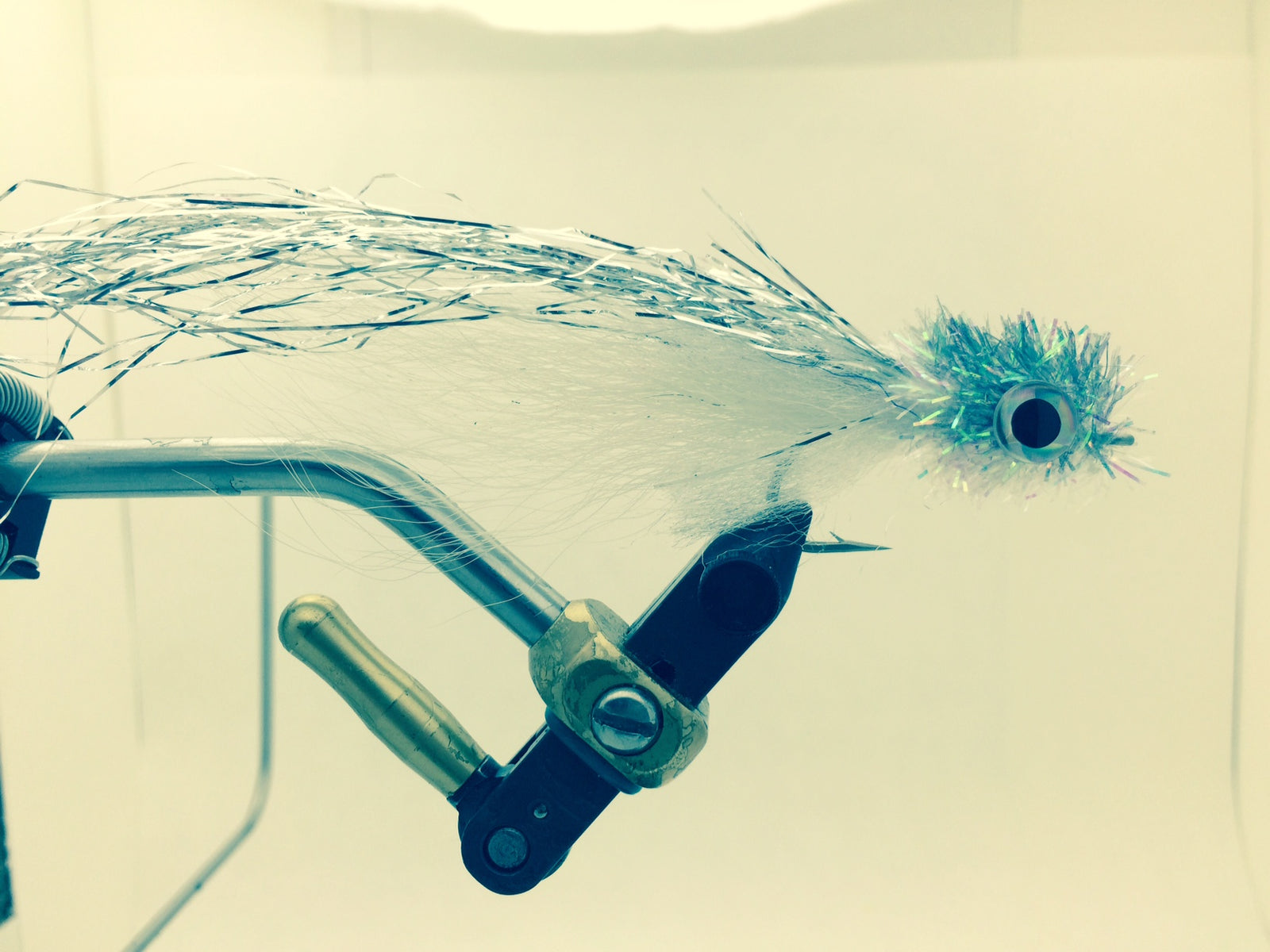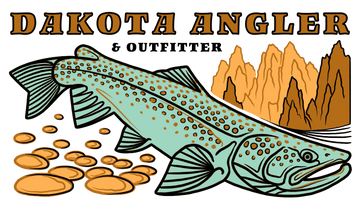Flyfishing the Missouri River - Tips, Flies, and Techniques

Ryan Gabert |
Some of our favorite fishing of the year is when we head east to the Missouri River near Pierre, South Dakota. There are endless opportunities for the warmwater fly angler on the Missouri - White Bass, Smallies, Pike, Catfish, and Walleye are just a few of the species you can encounter throwing a fly over there. These species can all be aggressive, and it's possible to have a hit literally every cast when the run is on. However, you have to approach it a little differently than your favorite trout stream - here's a few tips on presentation, flies, and how to find fish!
Location
The Missouri is a big and intimidating river, and it can be overwhelming when you're first trying to figure out where to toss your fly around at. We are most familiar with the section below Oahe dam down through Pierre, Lake Sharpe. Rather than just randomly flailing your fly around at any old spot, we prefer to look for areas that will concentrate fish, and "pinch points" that the fish will have to pass through to get from point A to point B. This is considerably easier when they are running water through the dam, because the fish start to act more trout-like and they use the current to their advantage. There are a lot of rock jetty-like points that stick out parallel to the current between Pierre and the dam, and they always seem to hold fish. Oftentimes there are more fish on the upstream current side of the jetties because the current pushes the food that the baitfish are eating into the rocks, bringing the batfish and consequently the larger fish in close as well. Because of this, it's not necessary to make a crazy long cast - I often catch most of my fish with a relatively short cast. 10-20 feet of fly line is often all that's necessary, and I catch a ton of fish at the end of my retrieve with just a few feet of line outside of my rod tip. When I get to the end of my line, I use the rod to jig the fly a few times, and they often eat when it's within just a few feet of where you're standing. Sandy, beach-ey areas attract a lot of fish as well, but they can be a bit harder to locate then on the more defined structure areas. The Marina below the dam, the beach areas on the west side of the river, and Griffin Park behind the hospital in Pierre are good bets to try for this type of water. Below the dam in the raceway can be a good bet depending on how much water they're running on that day, and the stilling basin can be good as well. The key to catching fish in the Missouri is to make sure you' re mobile - if you're not catching fish, just keep moving and trying new areas and types of water and you'll find them soon enough.
Flies and Gear
Fishing for warmwater species on the mighty Mo requires a bit beefier tackle than you would typically use on your average trout. Personally, I wouldn't recommend anything lighter than a 6 weight, and on my last several trips I've been using a fast-action 8 weight. The heavier rod allows you to cast easier in the ever-present wind, as well as throw large wind-resistant flies. My hands-down favorite line for warmwater fishing is the RIO Outbound Short with an intermediate tip. It'll cast the biggest of flies, and the intermediate tip gives you a wide range of depths available for you to fish. Here's a link to my article on warmwater fly line choice - How to choose a Warmwater Fly Line. For leaders and tippet, I prefer a fairly short leader; something around 9 feet total will get the job done easily. I really like the stiffer, more abrasion resistant tippets such as Maxima or RIO Max. They make turning big flies over easier, and can handle getting dragged around on rocks and stick with very little loss in strength. I use 10-12 pound generally, and I haven't found a reason to go lighter than that. Tie your flies on with a no-slip loop knot for added seductiveness. Maxima is the hip tippet to have, so you probably should get a spool or two - Maxima Tippet. A multitude of flies will get the job done at Pierre, and the fish generally aren't too picky. However, it's a good idea to have a few different sizes and colors. A few of my favorites are Murdich Minnows, Clousers, Ehler's Crazi Craw, Todd's Wiggle Minnow, Chain Reactions, and the legendary Don Polovich Bully Bugger. Here's links to pictures of them on our webstore, where you can also happen to buy them if you feel so inclined.
Don's Bully Bugger
Chain Reaction
Game Changer
Murdich Minnow
Kreelex
Techniques
The fish of the Missouri aren't known to be particularly selective, but there are a few tricks that can help you catch a few more fish. I think that the biggest key to catching fish in Pierre is getting your depth right. When I was there this last week, the faster the retrieve the better. The fish were within a couple feet of the surface, and were more than willing to chase stuff down. However, on other days they're more glued to the bottom and take a little more persuading. Don't be afraid to use different speeds, retrieves, and vary how long you let your fly sink. Changing it up is the key to getting into good numbers of fish. As I mentioned earlier, fish the fly all the way up to you - once you get your fly line almost to your rod tip, jig it a few times using your rod. You'll be surprised how many fish will eat the fly within a few feet of you!
If you get a chance in the next few weeks, head over to Pierre and experience some of our favorite fishing of the year! If you have any other questions about fishing the Missouri, feel free to give us a call or shoot us an email. Get out there and get a few!
Ryan


